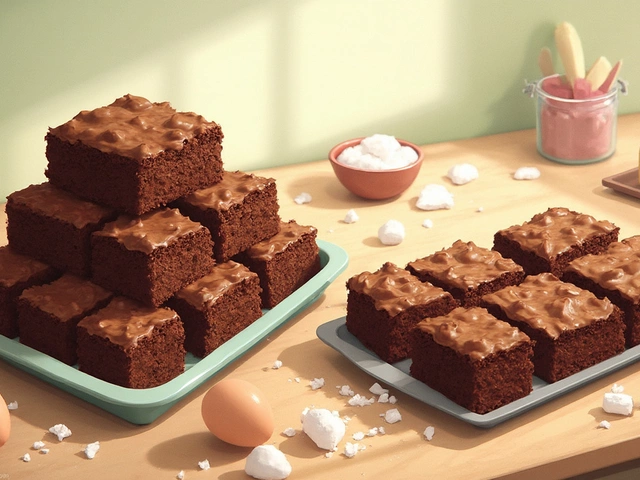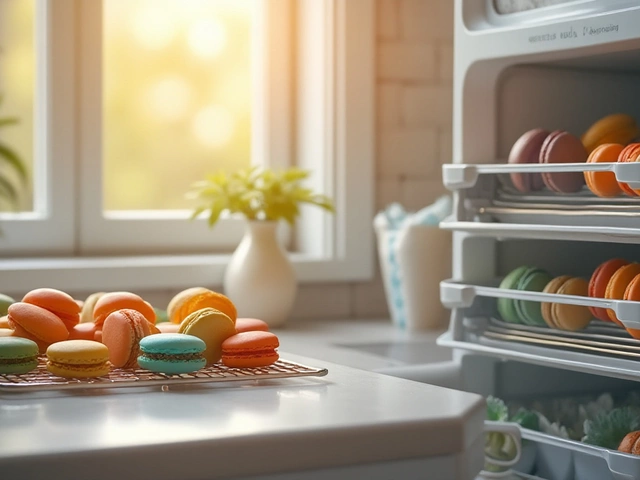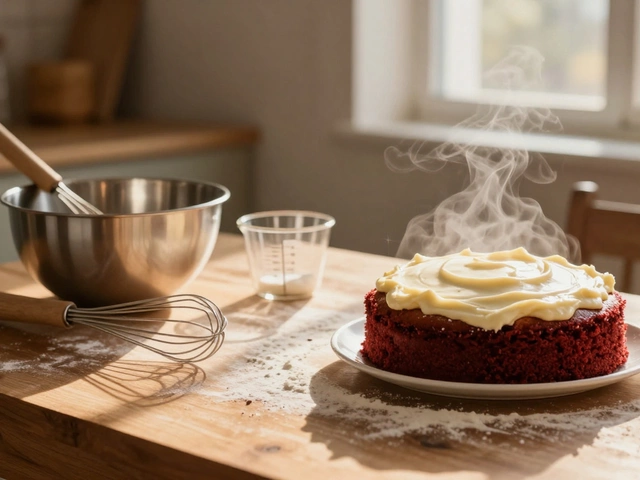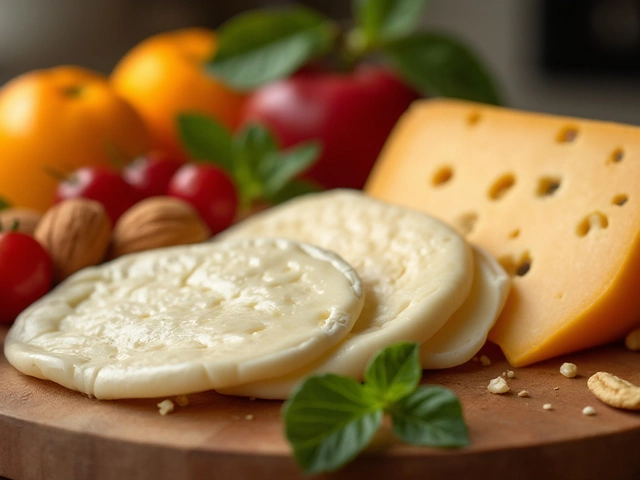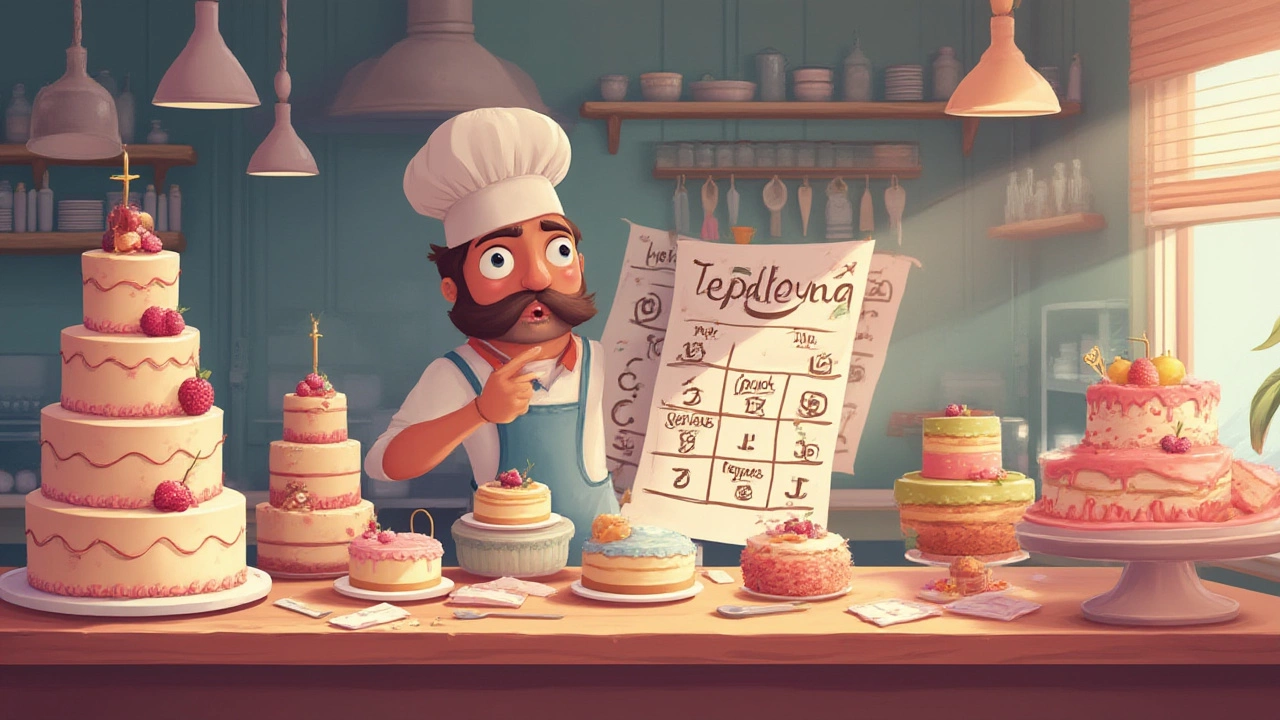
Ever been put on cake duty for a gathering and immediately panicked at the thought—what size cake will actually feed 50 people? It sounds simple, but the answer isn’t as obvious as you’d think. Party planners, brides, and even experienced hobby bakers have all felt the sting of miscalculation: running short, overspending, or just staring down a slab cake that's way too massive. There’s more to this than just picking the prettiest option at the bakery. Today, we’re breaking down what really matters in getting the right cake for your crowd, so you feel confident next time an order lands in your lap.
How Cake Slices Are Counted: More Than Just Math
Let’s start by cracking a myth—cake size isn’t just about diameter or width. Different types of cake give very different numbers of servings, and portion size can change everything. Classic American celebrations often use a standard slice roughly 1 inch by 2 inches, which surprises folks who are thinking of those monstrous birthday wedges you see at chain restaurants. Trust me, for a standard party, you only need a modest slice. Layered cakes, especially tall ones, stretch a lot further than those simple one-level bakes. The denser and richer the cake, like a fudgy chocolate or opera cake, the smaller your slice can be before people feel satisfied. On the flip side, light fluffy sponge cakes or angel food can (and should) be sliced a bit bigger or people will just come back for seconds. Bottom line: don't guess—look for a cake serving chart or guide made by a reputable baker or trusted cake resource.
Most guidebooks offer a general rule of thumb: an 8-inch round cake with two layers feeds about 20 people. The math scales up or down from there. If you look at Wilton’s official serving chart (yep, the cake decorating company that’s been around since the 1920s), a 12-inch round cake, two layers high, serves close to 40, and a 14-inch round, two layers, should serve 63. So, for 50 people, you’re right in the sweet spot between 12 and 14 inches, or you can combine tiers to mix it up and impress the crowd. Just remember, every bakery might use slightly different cutting methods. Don’t be shy; ask them how what size cake for 50 people works with their slices.
Choosing the Right Cake Shape and Tier for Your Event
Here’s where things get fun—there’s not only one answer, especially if you want your cake to look as fabulous as it tastes. Round cakes are classic and give reliable servings. A single tall round cake, around 14 inches wide, neatly feeds your 50 guests. But, if you want a bit of drama on the table, go for tiers. A two-tier cake (say, a 10-inch tier on the bottom and a 6-inch on top) can easily reach the magic number, especially if both tiers are a bit taller than standard. Tiers look impressive, offer flavor variety, and they’re easier to slice neat portions from than one giant sheet.
Rectangular sheet cakes are another crowd favorite, especially if you’re serving a casual group or need to keep things budget-friendly. One full sheet cake (usually 18x24 inches) will feed 48 to 54 people based on classic party serving sizes. If you can find specialty sheet cakes with two layers and filling, you get the elegance of a layer cake with the simplicity of a sheet. Plus, decorating is a breeze—a few flowers, edible pictures, or even a cartoon drawing if it’s for a kid’s party.
Trying to cover dietary restrictions? Cupcakes or mini cakes are trendy and convenient for a reason. Fifty cupcakes with uniform icing make setup, serving, and clean-up so much easier. If you want to wow, do a cupcake tower with a small cake on top for cutting. That way, you keep the tradition alive and cater to modern preferences.
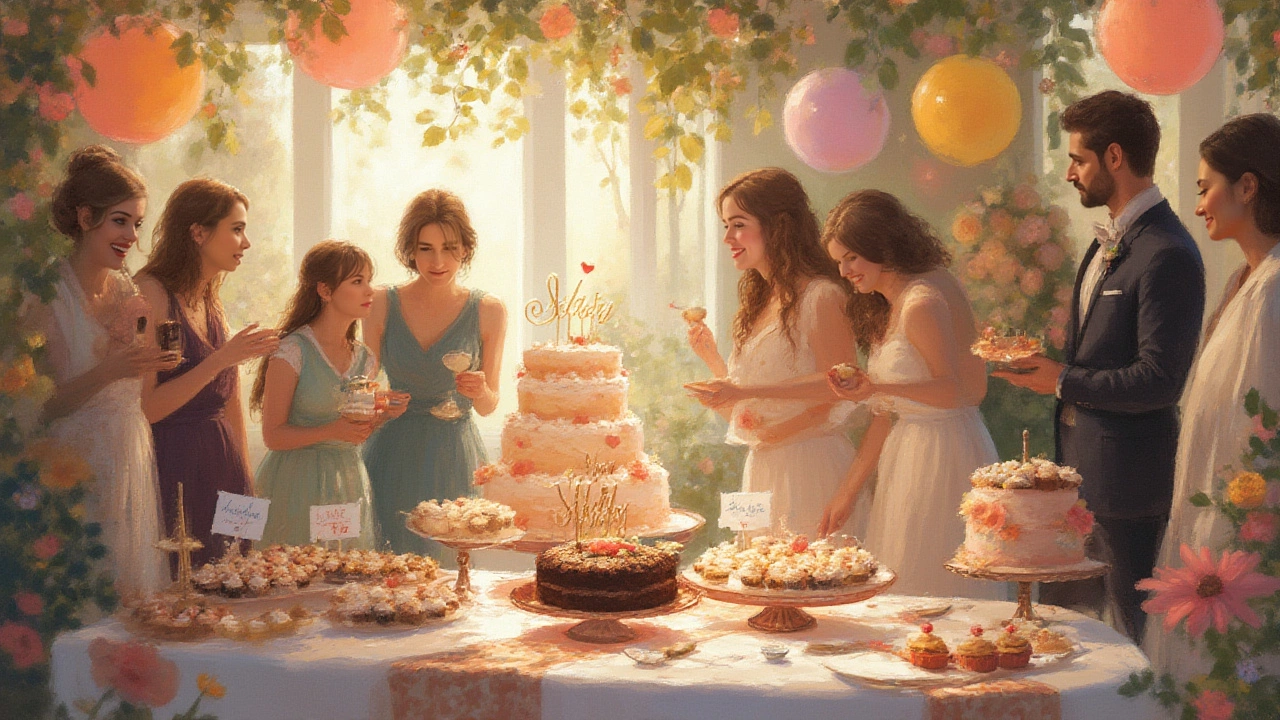
Sizing for Different Cake Styles: Layer, Sheet, Cupcake & More
Not all cakes are created equal when it comes to serving size. Multi-layered cakes (sometimes called tiered or stacked cakes) stretch further than you’d think. For example, a standard two-layer 12-inch round cake feeds about 40, but if you make it three layers tall and slice slightly thinner, you can edge closer to your 50-person goal. If you love ornate European styles, like genoise or opera cakes sliced into dainty rectangles, you often get more slices per cake, too, since the eating experience is rich and filling.
For sheet cakes, stick to industry standards if you’re ordering from a bakery. A half-sheet (12x18 inches) generally serves 36 to 48, so you’ll want a full sheet to hit 50 without scraping frosting off the corners. Don’t forget—sheet cakes are usually one layer unless you ask for two. A double-layer sheet cake gives more servings or lets folks go back for a second taste.
Now, cupcakes aren’t just cute—they’re precise. Fifty guests? Make fifty cupcakes and you’re bulletproof. Any left over disappear fast, trust me. If you want to get fancy, offer two flavors (say, chocolate and vanilla) and alternate frosting colors so everyone feels like they have a choice. Mini-cakes or cake pops offer the same one-per-person reliability, but they take more time (and cash) to decorate individually.
Cutting Techniques: Making Sure Every Guest Gets a Slice
You wouldn’t believe how much difference the right cutting technique makes. If you slice a cake like you would in your family kitchen, with nice thick wedges, you’ll run out fast. Pros use a grid system for sheet cakes or slice round cakes into concentric rings, each ring chopped into neat little party portions. If you’re hosting the slicing, grab a long, thin, very sharp knife and dip it in hot water between each cut for those Instagram-worthy slices.
For tiered cakes, remove each tier before you start slicing. This isn’t just tradition—it’s practical. Cut off dowels or supports, and use a cutting board so you don’t smash the fluffy frosting. For a 14-inch round, start a few inches from the edge and cut a neat circle, then slice that ring into equal pieces. Move in smaller and smaller rings, working your way to the center. For more complex shapes, look up the bakery’s guide or Wilton’s website—they have free printable cheat-sheets. A full sheet cake gets cut into a grid, with servings about 2 inches by 2 inches.
If you really want to look like a pro, have a wet towel or a glass of hot water handy—every few slices, wipe the knife to keep your corners sharp. This stuff actually matters if you want every guest’s photo to show picture-perfect slices.

Planning Ahead: Budget, Leftovers, and Pro Secrets
If your budget is tight, a single sheet cake or a round with cupcakes on the side is economical—sheet cakes are less labor-intensive, which means lower prices at most bakeries. If looks matter more than cost, tiered cakes give visual wow for milestone occasions and weddings. Here’s the truth: unless you’re dealing with professional competitive eaters, almost nobody polishes off a huge slice, especially after a big meal. So don’t be shy about going for standard serving sizes, or even a smidge smaller if you plan to serve ice cream or other desserts with the cake.
Have leftovers? Send guests home happy—little boxes or paper bags with cake slices are always a hit. Storing leftover cake is easy: keep it in an airtight container at room temperature for 2-3 days, or freeze for up to two months (just wrap slices in cling film and foil). Some cake types, like carrot or red velvet, actually taste better after a day or two in the fridge as flavors meld.
The best trick I’ve learned from baker friends? When in doubt, order just a bit more than you need, but not much more. People will always wonder if there’s a second dessert, especially if you’re serving a smaller crowd. And if you want every guest to get a photo op, plan for an extra 1-2 slices over your headcount, just in case someone brings a plus-one or that one cousin turns up late but hungry as ever. With the right size cake, you serve up joy, not just dessert—no awkward empty plates, no waste, just plenty of sweet memories (and maybe a sliver for breakfast, too).

